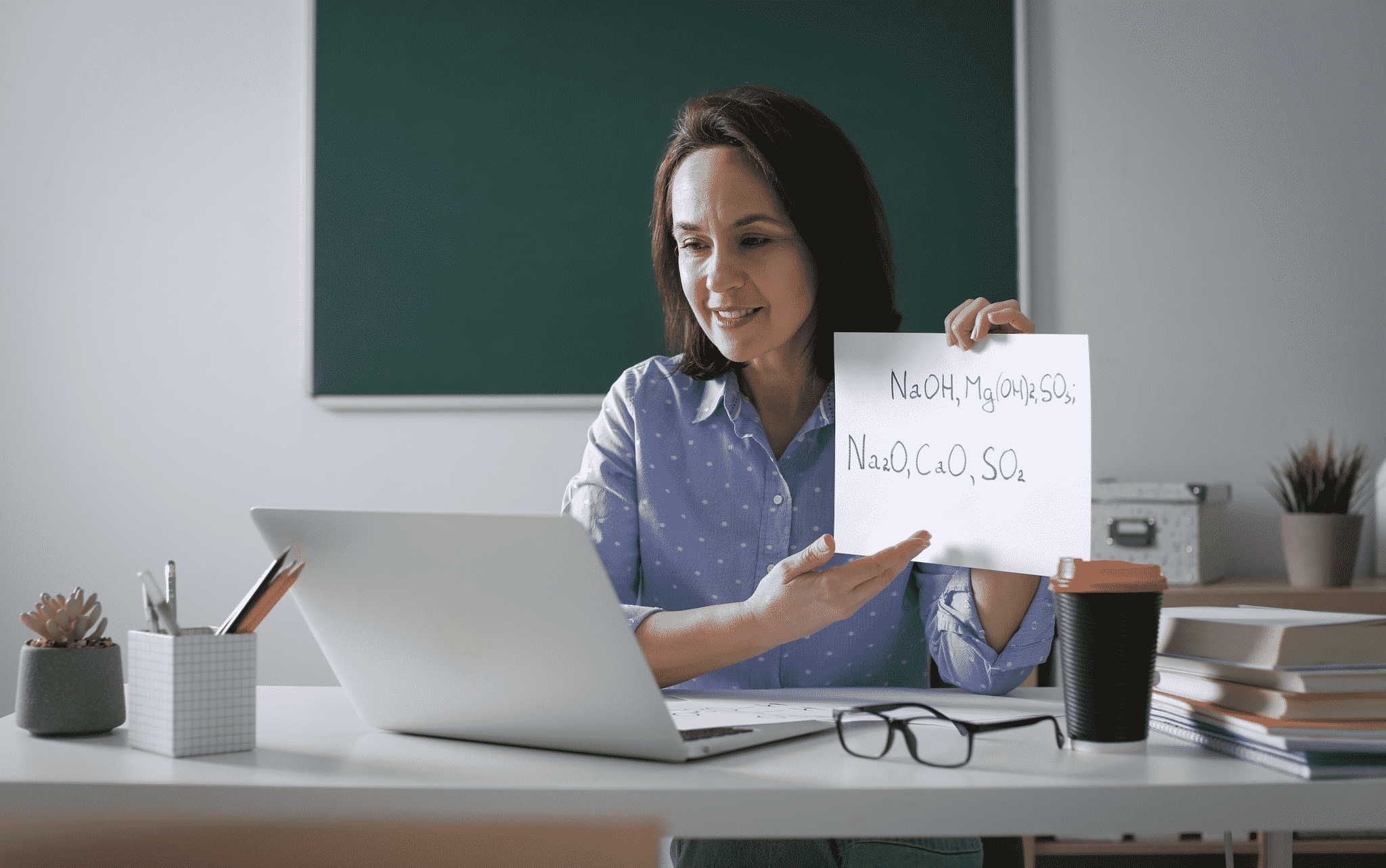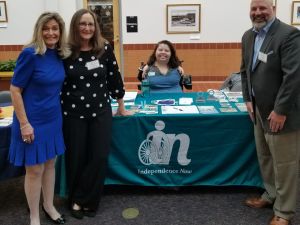Research in Practice- Professional Learning: Supporting Teachers to Promote Student Engagement

Spotlight – Stories from the Field
Heather Walker, Prince George’s County Public Schools
Heather’s Challenge: How can I better support new teachers and create lessons using explicit instruction to promote student engagement during remote learning?
Heather Walker, an itinerant special education teacher in Prince George’s County Public Schools, wanted to explore ways to promote engagement for middle school students in the virtual learning setting. Recent research has suggested that teachers can increase student’s achievement during remote learning by increasing their motivation. The Ceedar Center and NCSI have suggested that one way to improve student engagement is through providing struggling students with high-leverage practices, such as explicit instruction. Explicit instruction is a well-researched, exceptionally successful instructional strategy and is beneficial for both students and teachers. Teachers can couple explicit instruction with technology features (e.g., break-out rooms, chat boxes, discussion boards, flipgrid, etc.) to increase student engagement. While there is research to support the implementation of explicit teaching to increase student engagement in some settings, there was limited evidence found linking the effectiveness of explicit instruction on the engagement of middle school-age students during remote or hybrid instruction.
During co-planning sessions, Heather worked with a general educator and paraeducator planning team to explore how explicit instruction, such as modeling and guided practice, could positively impact student engagement. In ongoing planning sessions, the team determined how to incorporate technology features such as the break out rooms, chatbox, padlet, flipgrid, etc., as a way to check for student understanding throughout the lesson and promote active participation. Heather then observed in the inclusive classroom, using a checklist to capture the implementation of the lesson and the effectiveness of the practice during the lesson. Heather maintained a flexible format throughout the weekly planning and feedback sessions, providing additional support with navigating the curriculum, lesson planning, and familiarity with technology. Over the course of several weeks, Heather provided ongoing collaboration and feedback regarding the teacher’s integration of explicit instruction and technology to increase student engagement. Heather also observed a noticeable increase in engagement from middle school students corresponding with an increase in technology integration as a result of ongoing explicit instruction and support in weekly collaborative sessions.
Implementation Plan
Time: At least 4 weeks: one co-planning session per week and one observation in the classroom per week
Materials/Resources: Co-planning structures/time, Checklist for observation
Steps:
- During co-planning, identify content to be taught and needs of students/barriers to instruction
- Establish how skills or concepts will be taught, integrating explicit instruction strategies and technology
- Implement practices from co-planning sessions in inclusive general education classrooms
- Observe instruction, noting implementation of explicit instruction to promote engagement
- Meet with the teacher to debrief observations and provide any additional follow-up training (ex: additional technology training, additional training on curricular topics, etc.)
Implications for Practice/Conditions for Success
- Know the needs and abilities of your audience. Teachers must know their student’s background knowledge. This information can be gathered through informal discussions and/or assessments. Knowing this information will better aid in providing the appropriate instructional strategies to support student learning
- Suggest that the teacher become familiar with explicit instruction strategies and set aside adequate time and careful planning when incorporating these strategies. It may also be beneficial to new teachers to observe a seasoned teacher utilizing explicit instruction
Supporting Research and Resources
Herburger, D., Holdheide, L., & Sacco, D. (2020). Removing barriers to effective distance learning by applying the High-Leverage Practices: Tips and tools. American Institutes for Research, University of Florida, and WestEd. https://ceedar.education.ufl.edu/wp-content/uploads/2020/10/CEEDER-Leveraging-508.pdf
McLeskey, J., Barringer, M-D., Billingsley, B., Brownell, M., Jackson, D., Kennedy, M., Lewis, T., Maheady, L., Rodriguez, J., Scheeler, M. C., Winn, J., & Ziegler, D. (2017, January). High-leverage practices in special education. Arlington, VA: Council for Exceptional Children & CEEDAR Center. © 2017 CEC & CEEDAR. https://highleveragepractices.org/sites/default/files/2020-10/Instructionfinal.pdf*
Martin, F. and Bolliger, D. U., 2018, Engagement Matters: Student Perceptions on the Importance of Engagement Strategies in the Online Learning Environment. Online Learning, v22 n1 p205-222.
*This pdf is not 100% accessible and is not a required resource.






